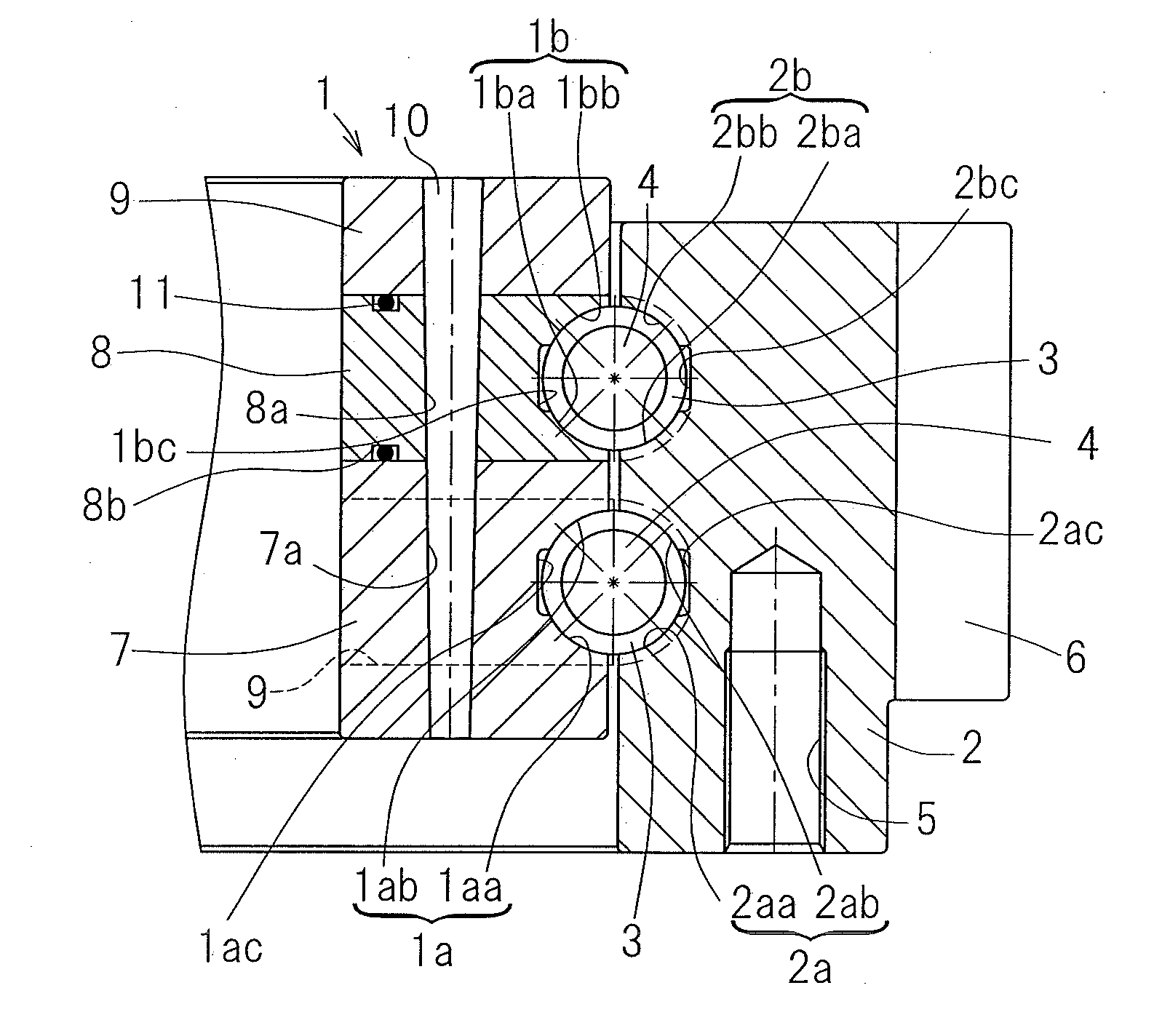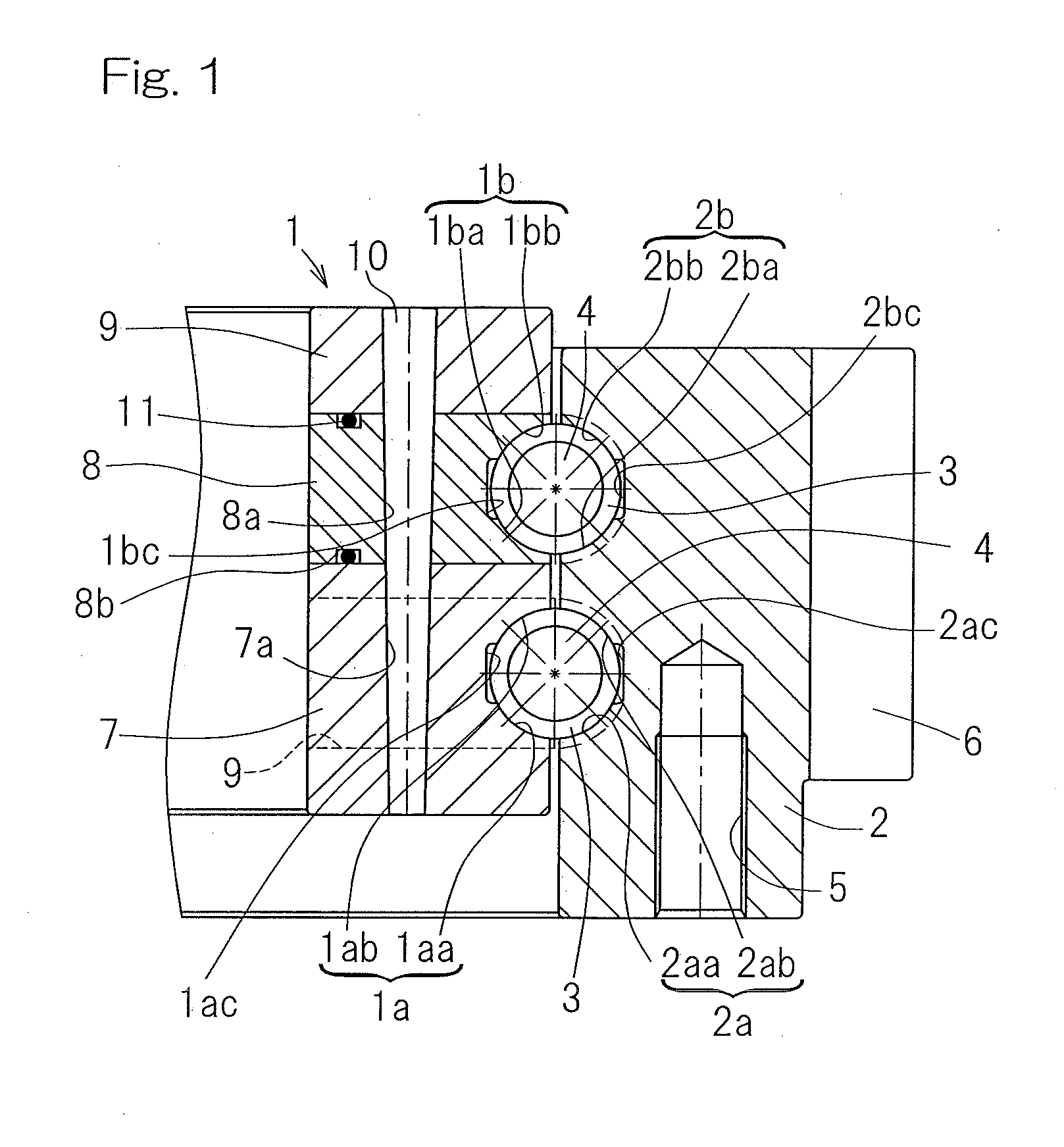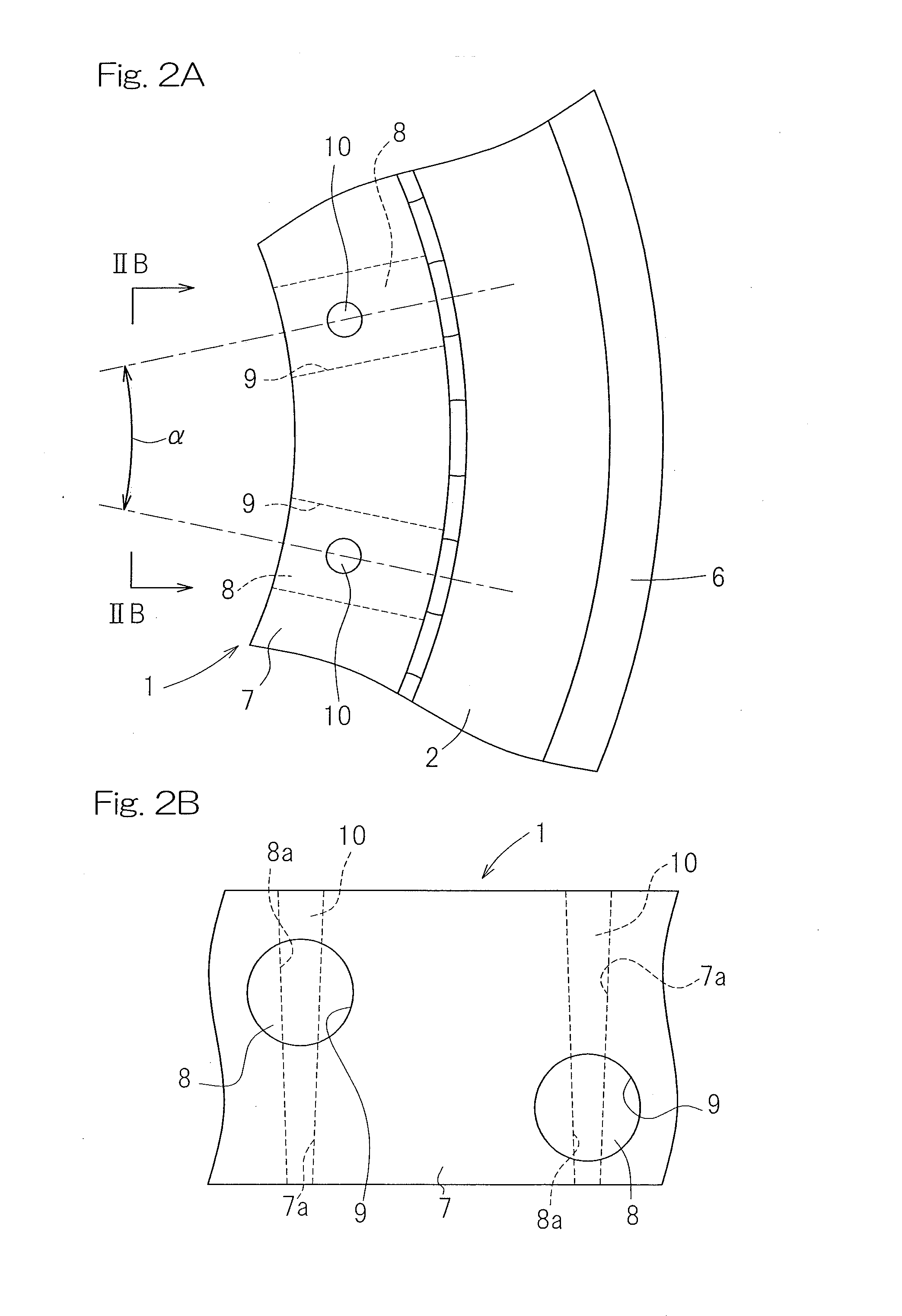Slewing bearing and rotating section support device for wind turbine
a technology of rotating section and support device, which is applied in the direction of rotary machine parts, machines/engines, mechanical equipment, etc., can solve the problems of radial load and moment load of the bearing assembly used in the wind powered turbine, and achieve the effect of suppressing the cost of molds or the like, reducing the cost of manufacture, and reducing the occurrence of voids
- Summary
- Abstract
- Description
- Claims
- Application Information
AI Technical Summary
Benefits of technology
Problems solved by technology
Method used
Image
Examples
first embodiment
[0039]the present invention will now be described in detail with particular reference to FIGS. 1 to 7. A slewing bearing assembly shown therein is used as a bearing assembly in, for example, rotatably supporting, relative to a main shaft, a wind mill of a wind powered turbine for rotation about an axis substantially perpendicular to an axis of the main shaft or in supporting a nacelle of the wind powered turbine relative to a support post.
[0040]Referring to FIG. 1, the slewing bearing assembly includes an inner ring 1 having defined therein a plurality of, for example, two, raceway grooves 1a and 1b, an outer ring 2 having defined therein a corresponding number of raceway grooves 2a and 2b, and corresponding rows of balls 3, one row rollingly interposed between the raceway grooves 1a and 2a and the other row rollingly interposed between the raceway grooves 1b and 2b, and a spacer 4 interposed between the neighboring balls 3 of each of the ball rows. Each of the raceway grooves 1a, 1...
second embodiment
[0063]Now with particular reference to FIG. 8, the spacer for the slewing bearing assembly will be described in detail. As shown therein, each of the ball contact surfaces 4a and 4a on the respective sides of the spacer 4 may be of a composite curved shape comprised of a contact surface radially inner portion 4aa and a contact surface radially outer portion 4ab, which are in the form of a curved surface of a rotated body depicted when two arches having a center curvature and a curvature center different from each other are rotated 360°.
[0064]More specifically, the contact surface radially inner portion 4aa is of a shape having a spherical portion of a diameter substantially equal to the radius R of each of the balls (See FIG. 3.) as a ball contact portion. Instead of the ball contact surfaces 4a and 4a of the composite curved shape as described above, the spacer 4 may be so shaped that the ball contact surfaces 4a and 4a on the respective sides thereof are of a single conical surfa...
PUM
| Property | Measurement | Unit |
|---|---|---|
| temperature | aaaaa | aaaaa |
| melt viscosity | aaaaa | aaaaa |
| diameter | aaaaa | aaaaa |
Abstract
Description
Claims
Application Information
 Login to View More
Login to View More - R&D
- Intellectual Property
- Life Sciences
- Materials
- Tech Scout
- Unparalleled Data Quality
- Higher Quality Content
- 60% Fewer Hallucinations
Browse by: Latest US Patents, China's latest patents, Technical Efficacy Thesaurus, Application Domain, Technology Topic, Popular Technical Reports.
© 2025 PatSnap. All rights reserved.Legal|Privacy policy|Modern Slavery Act Transparency Statement|Sitemap|About US| Contact US: help@patsnap.com



